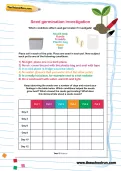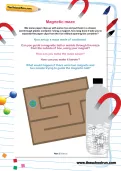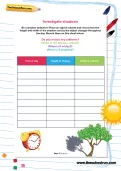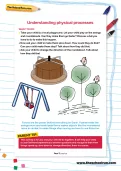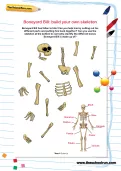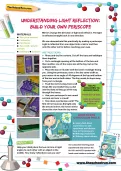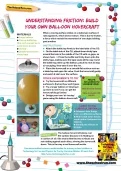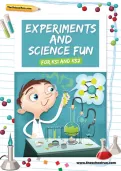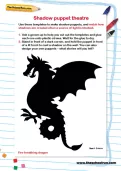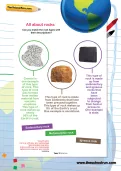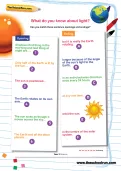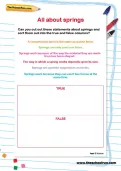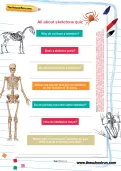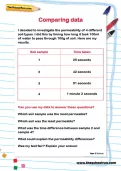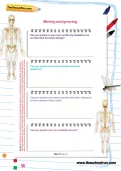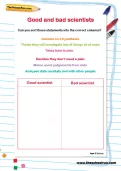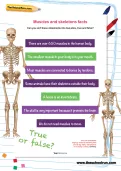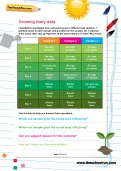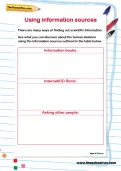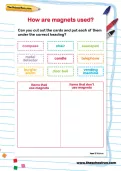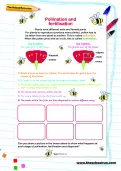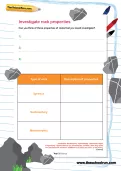Be a shadow detective! Place an object outside and record how the height and width of the shadow cast by the object changes throughout the day. Record them on this sheet.
or
Register to add to your saved resources
Boneyard Bill has fallen to bits! Can you help him by cutting out his different parts and putting him back together? Can you use the skeleton at the bottom to correctly identify the different bones Boneyard Bill is made up of?
or
Register to add to your saved resources
Already a subscriber? to view this content.
The Earth has a weak magnetic field caused by the movement of molten iron in its core. The Earth’s magnetic field acts on a magnetised needle, pulling one end towards the north and the other towards the south magnetic pole. Understand more about magnets by making your very own magnetic compass from a polystyrene pizza base, a needle, a pin and a strong magnet.
or
Register to add to your saved resources
Mirrors change the direction of light and reflect it. We can demonstrate this practically by making a periscope. Light is reflected from one object into a mirror and then onto the other mirror before reaching your eyes. Collect your materials and find out for yourself!
or
Register to add to your saved resources
When a moving surface slides on a stationary surface it rubs against it, which slows it down. This is due to friction, a force which resists the movement of one object sliding past another. Understand more about friction with a fantastic practical project: make your own balloon hovercraft!
or
Register to add to your saved resources
Beans, gingerbread men, ice, washing-up bottles and cocoa powder – that's all you need to demonstrate key KS1 and KS2 science concepts to your child at the kitchen table. Packed with simple experiments, fun games (Muffled Chinese Whispers, anyone?) and parent-friendly science explanations, our Experiments and science fun for KS1 and KS2 learning pack is all you need to make primary science come to life for your child.
or
Register to add to your saved resources
Cut out these dragon, fairy and owl shadow puppets to use in storytelling, while also learning about the properties of light and dark when a light source is blocked by an object.
or
Register to add to your saved resources
A worksheet encouraging children to match types of rock (igneous, sedimentary, metamorphic) with their descriptions.
or
Register to add to your saved resources
Already a subscriber? to view this content.
A worksheet with half-sentences about light, to cut out and re-arrange so that they make sense.
or
Register to add to your saved resources
Already a subscriber? to view this content.
A worksheet listing several statements about springs which children have to sort into 'true' and 'false' boxes.
or
Register to add to your saved resources
Quiz questions to prompt your child to think about what they know about skeletons.
or
Register to add to your saved resources
A worksheet showing results of an experiment into soil permeability with questions for children to answer.
or
Register to add to your saved resources
A list of questions to prompt children into thinking further about moving and growing and the importance of the skeleton.
or
Register to add to your saved resources
A list of statements for children to look through and decide which are true of good scientists.
or
Register to add to your saved resources
A list of statements about muscles and bones that children need to cut out and then sort into 'true' and 'false' piles.
or
Register to add to your saved resources
Already a subscriber? to view this content.
A worksheet showing results of an investigation into how different soils affect the growth of plants.
or
Register to add to your saved resources
Already a subscriber? to view this content.
A worksheet with spaces for children to research skeletons using various sources.
or
Register to add to your saved resources
A worksheet to encourage children to think about objects and whether they use magnets.
or
Register to add to your saved resources
A worksheet demonstrating the male and female parts of a flower and then explaining the process of pollination and fertilisation. Children draw pictures to show their understanding.
or
Register to add to your saved resources
Worksheet encouraging children to think about the properties of different rocks.
or
Register to add to your saved resources
Already a subscriber? to view this content.
